Narrow Garden at Front of House
Category
Last modified
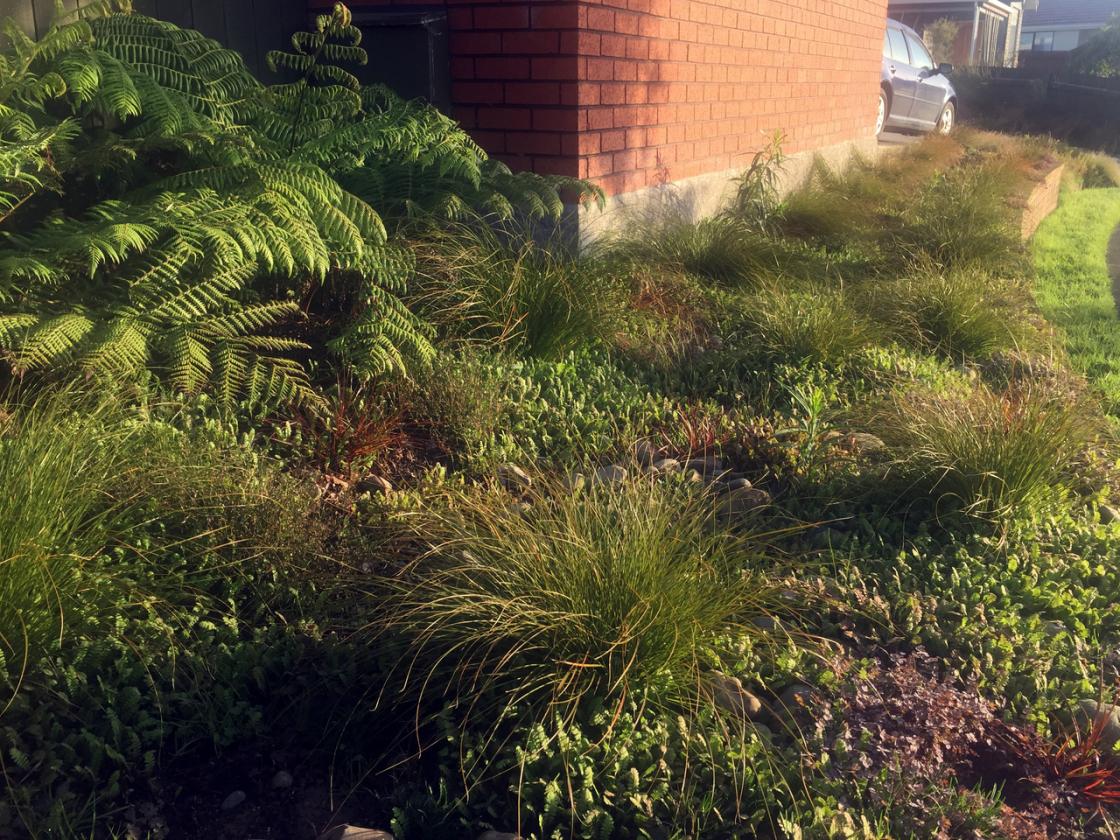
2017-04-17 Garden bed 5 months after planting.
A small garden can have a big impact on our native animals. The value is not in attracting animals but through beauty inspiring the visitor to value life around them. These photos were taken four months after planting. Previously there was a single line of brown tussocks with lawn in front. The majority of the plants are natives, the silver ferns being strongly tied to New Zealanders sense of indentity. In fact you'll have to squint to spot the exotics. There are two exotic species, one was planted to attract the, native, Monarch Butterfly, the other supports my sense of whimsy with it's (to come) pink pompom flowers... it also supports bees and other nectar feeders.
Beyond plants there are the small stones, logs, and forest floor duff. They provide homes for beneficial invertebrates such as ladybirds, spiders, and praying mantises. Duff is the top layer of detritus from a forest floor. It contains microbes that aren't found in a typical suburban garden. These form the bottom of the food chain and help to return nutrients to the soil through decomposition. The undersides of the small stones tend to be damper than the surrounding soil. They help plants through droughts and provide refuge for small invertebrates from predators, and the drying wind and sun.
Garden planted December 2016.
Plants used:-
- Cyathea dealbata
(Silver fern) - Carex dipsacea
(Green tussock) - Carex uncinata
(Small red/brown grass) - Acaena inermis 'Purpurea'
(Purple groundcover) - Leptinella dioca 'Giant'
(Green groundcover) - Gomphocarpus fruticosus
(Swan plant) - Armeria maritima
(Flowers are pink pompoms on 10cm stalks)
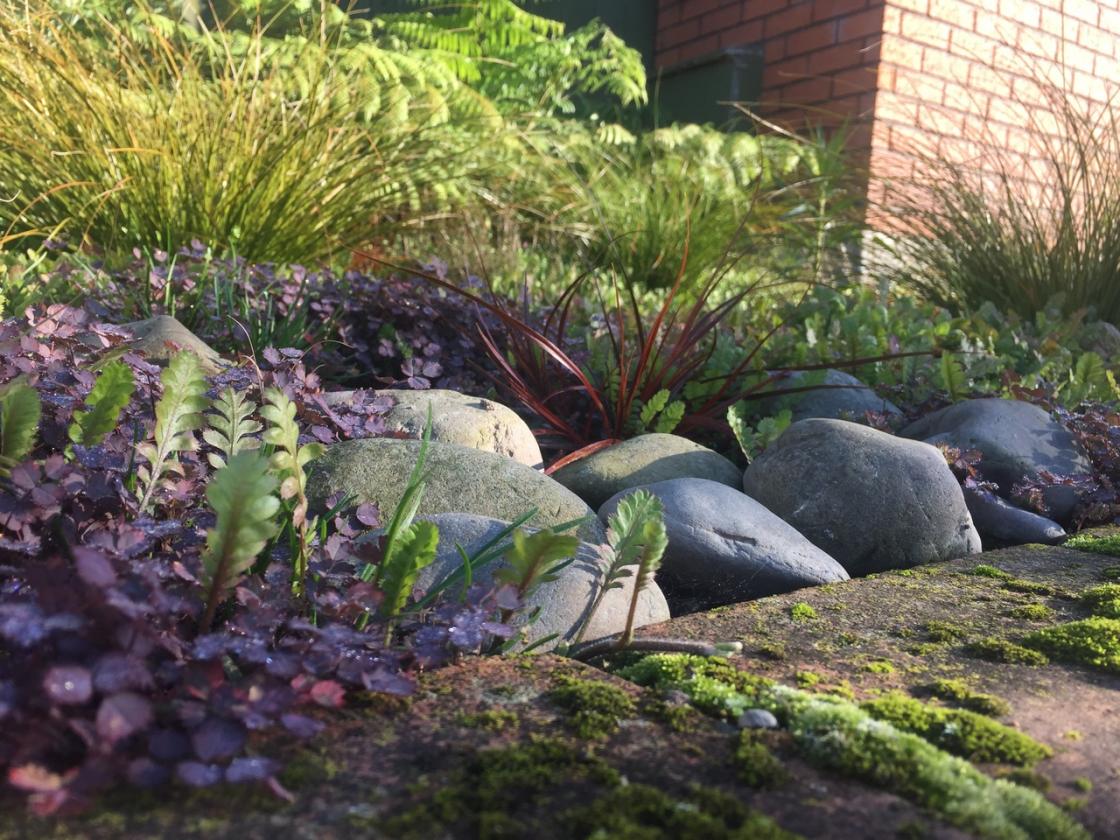
Update 2017-04-22: Closeup of moss and groundcovers
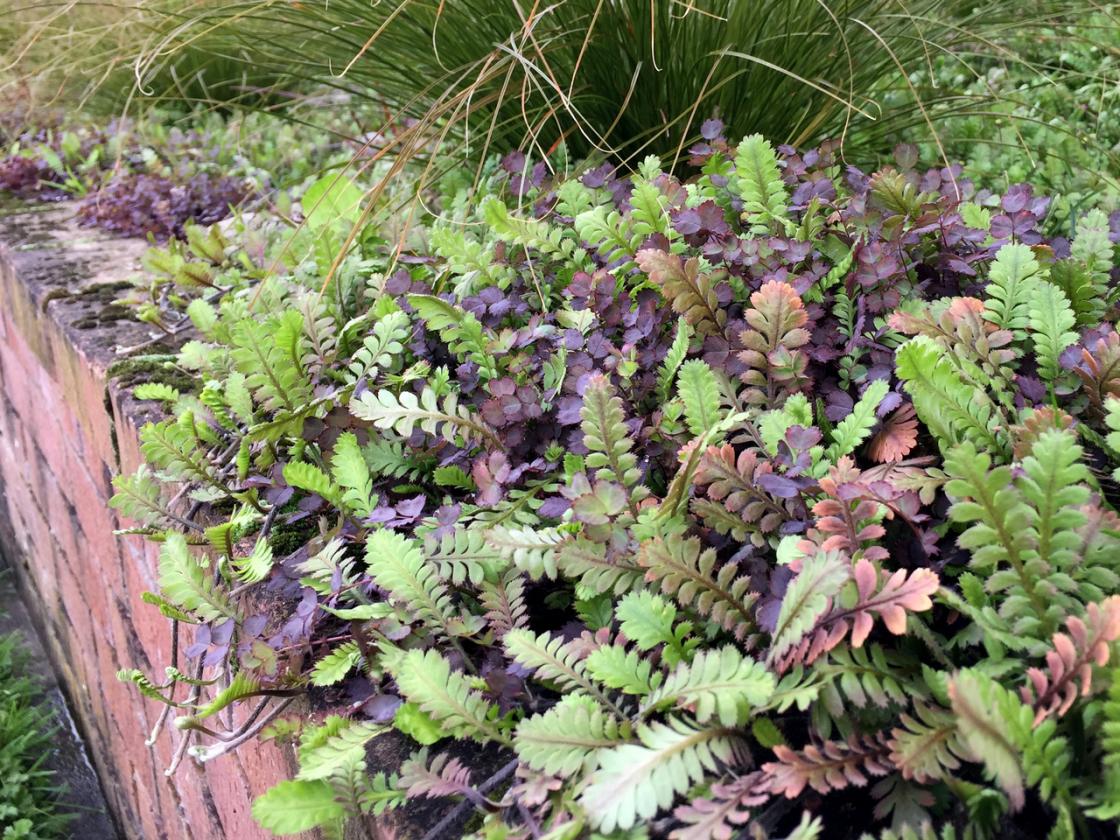
Purple (Acaena inermis) and green (Leptinella dioca 'Giant') groundcovers provide strong contrasting colour. They are both vigorous spreaders and do a great job of suppressing weeds.
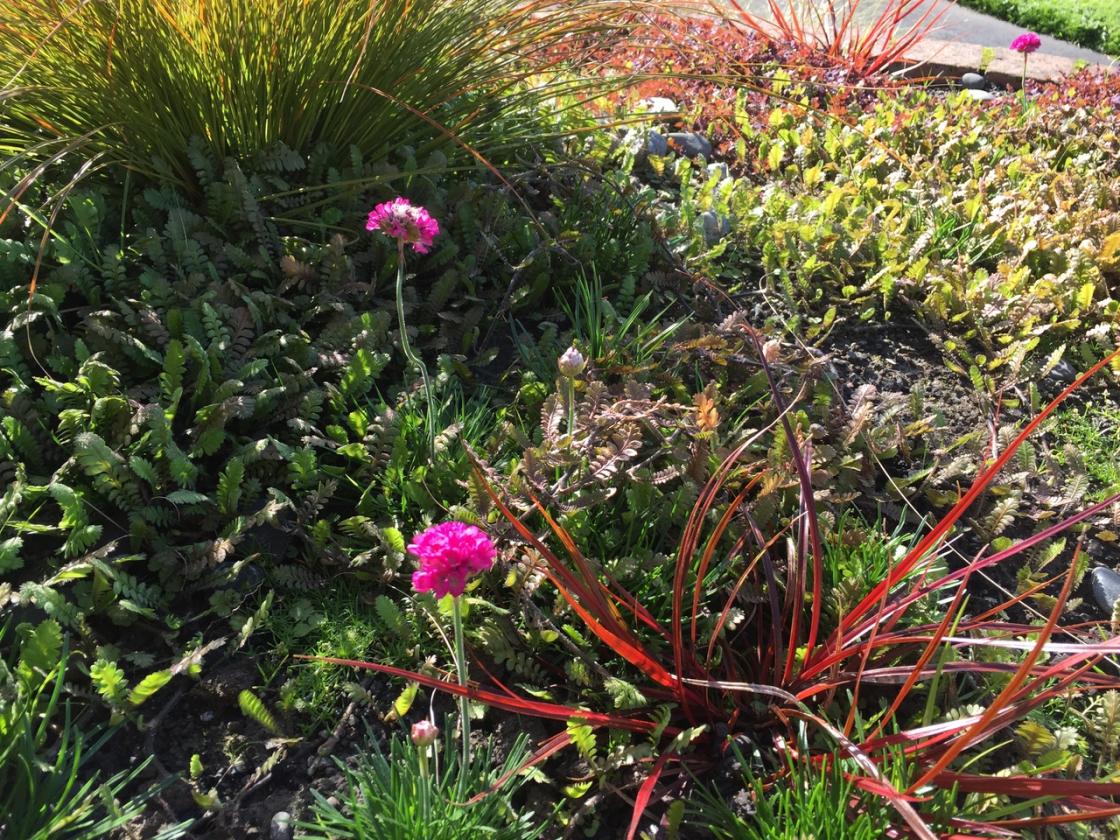
Update 2017-05-17: Armeria maritima has pink pompom flowers. They grow from seeds scattered at the time of planting. The red grass is Carex uncinata (formerly Uncinia uncinata).
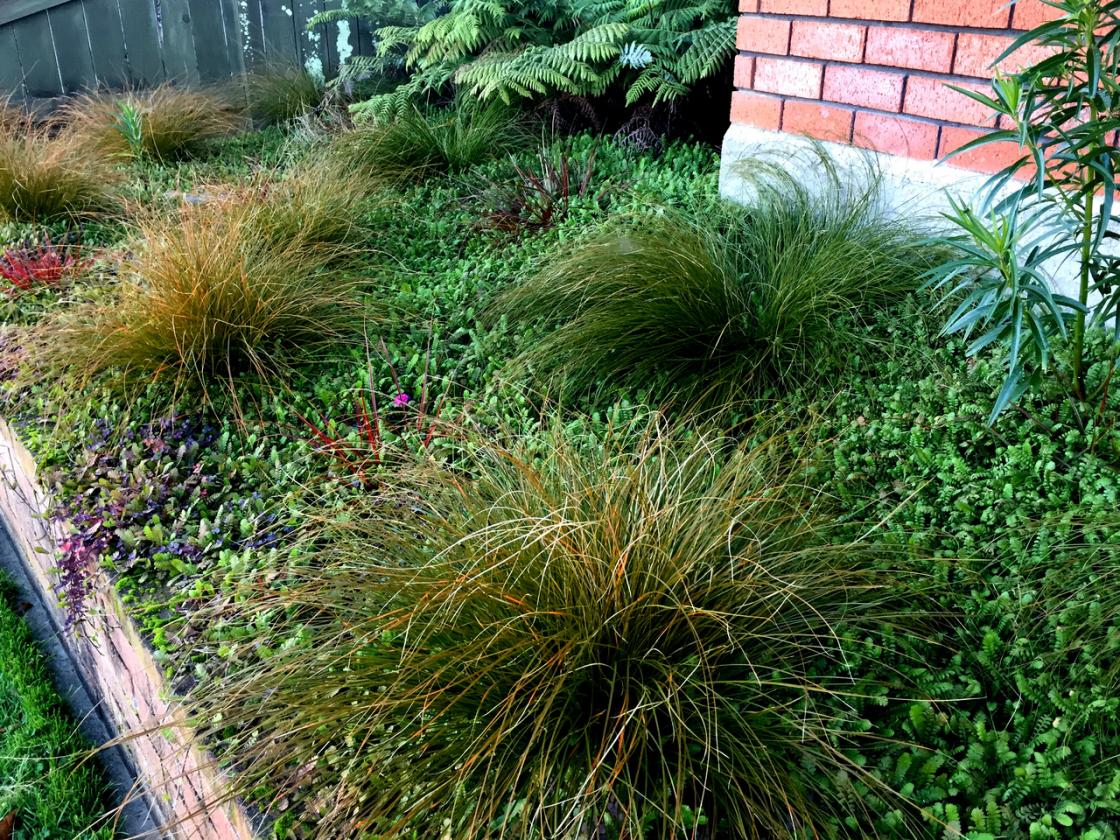
Update 2017-06-20: In mid winter the swan plants are doing well despite frosts. Being close to the house they are sheltered from the worst and the Leptinella might be acting to trap air close to the ground and provide insulation. The Carex uncinata are the slowest to grow, some of them are barely visible above the L. dioca. The C. dipsacea are fully grown.
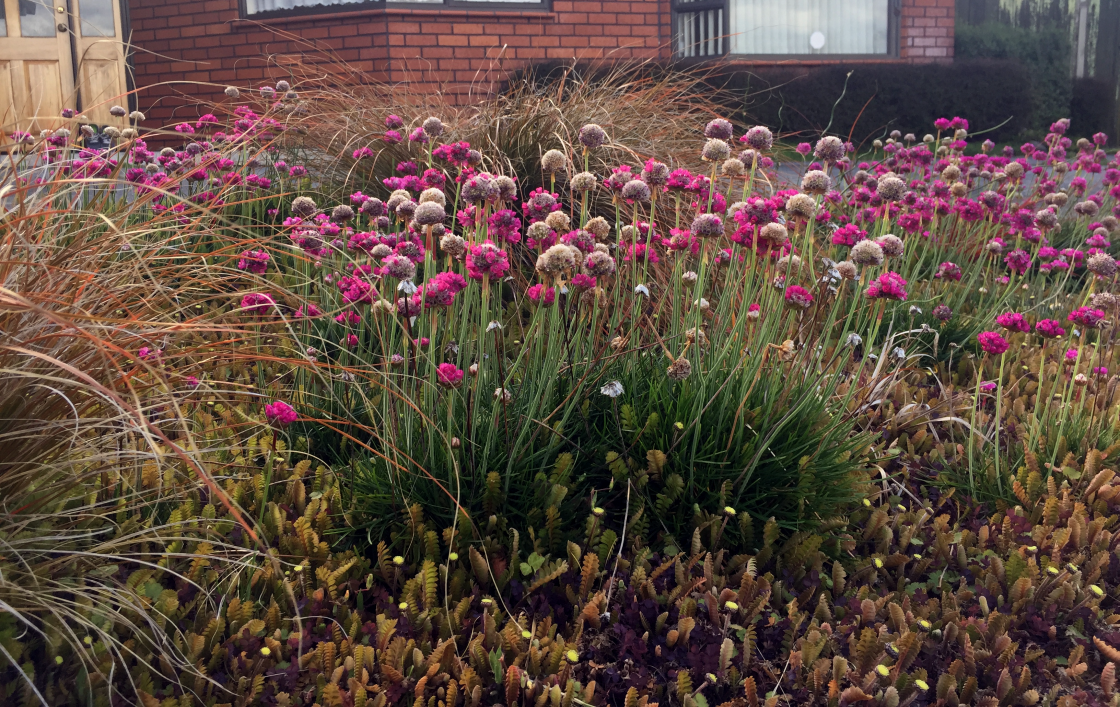
Update 2018-11-02: The Armeria maritima's have spread and there's a good flush of pink pom poms. Also note the 'brass button' flowers of the Leptinella dioica. With the grasses they're forming a nice matrix.
Add a remark